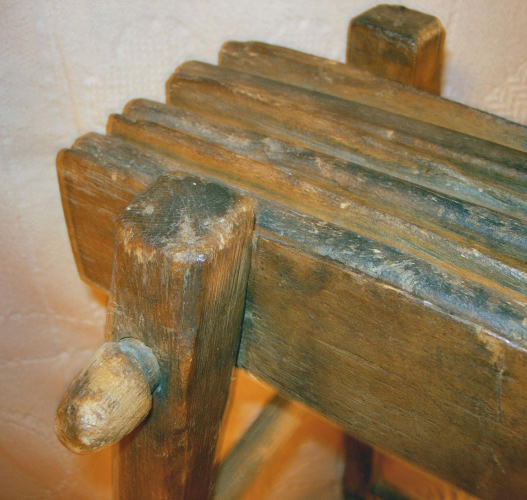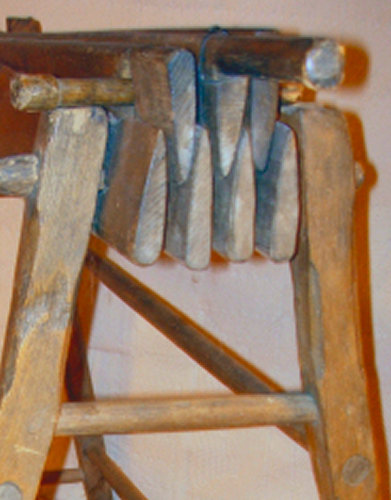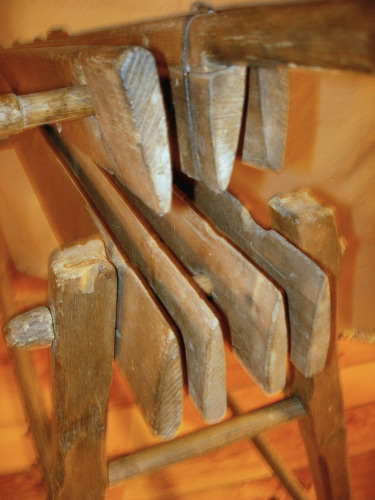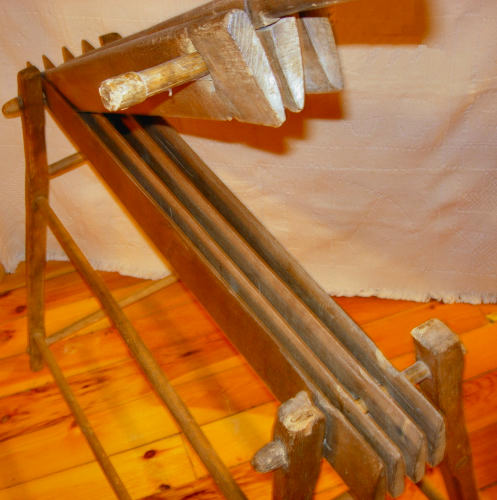

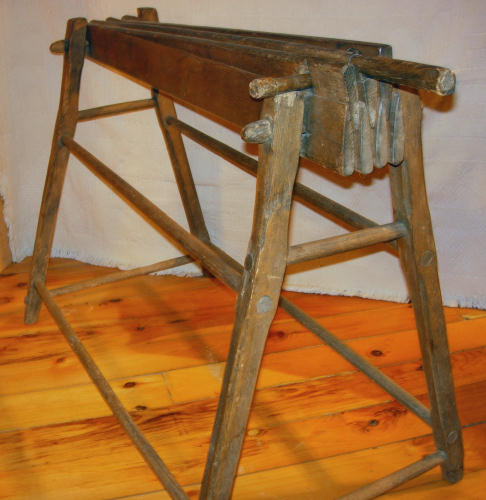
| Flax is a woody stemmed plant that has no other use besides that of providing fibers for linen cloth. A farmer would plant the flax from seed like any other plant in his garden. A light, sandy soil was preferred over clay in order to produce fine textured plants. And planting the seeds densely produced single, unbranching stems that rose to nearly three feet in height, topped by a cluster of blue flowers. The seeds were sown in April, and the plants were ready for picking by mid-August. After the plant had flowered, and the blooms developed into seed pods, after the stems turned a yellowish color, the leaves withered, and the seed pods began to turn a brown color, the entire plant would be pulled out of the ground, roots and all. It was not cut because that would result in shorter lengths of fibers; by pulling the plant out of the ground, the longest fibers would be assured. The farmer knew to grasp the plant just under the seed head; it would pull out of the ground easily. The stalks would be left to dry in the field before being rippled. The drying process lasted only a few days, although some people would store the stalks for periods up to a year in a dry place. Rippling involved pulling the stalks through a tool similar to a wooden comb-like tool in order to strip the seed pods off the stems. The seed pods were set aside. They would be used to make linseed oil. The rippled stalks were gathered into bundles called bates which were then soaked in water. The process of soaking was known as retting. The flax stalks needed to be retted for five days, preferably in running water, such as a small stream. There, they would be weighted down by laying a rock over the roots. It was easier to soak the bates in a pond, but the chemicals that leeched out into the water would kill any fish in the pond. The purpose of retting was to make the inner core of the plants brittle and more effectively broken into small pieces. It should be noted that some farmers practiced ‘dew retting’. This involved laying the stalks out over the ground, exposing them to the sun, rain and especially the dew every morning. This process would cause the fibers to become very dark in color, a natural way of dyeing the flax fibers. Retting the flax in a stream of moving water kept the decaying matter washing away, and the fibers would be as clean as possible, almost as if they were bleached. The flax brake was used to break the flax’s core. As can be seen in the flax brake exhibited here, it consisted of a supporting frame and two sets of long planks or slats, beveled along one of their long edges. One set of these planks, called knives, were set side by side on their long edges and held stationary to the supporting frame. The beveled edges of these knives aimed upward. Opposing the stationary set was another set of knives, with their beveled edges aiming downward. This set were held together at each end by a wooden pin, one of which was also attached to the supporting frame in order to make a hinge. The other, loose end would have a handle attached or else one of the planks would extend past the others in order to form the handle, as shown in this example. The knives of the two sets were positioned so that they alternated, a top one and then a bottom one, and so forth in order that the two sets would interact with each other. The flax, after being retted, would be broken on the flax brake. The hinged, upper set of knives would be raised up, and a handfull of the flax would be laid across the stationary, bottom set of knives at right angle to the knives. The upper set of knives would be brought down hard against the flax. As the upper set of knives attempted to mesh with the bottom set, the flax would be crushed in the middle. The handfull of flax would be repositioned, and the process repeated, until the core of the flax, along its entire length, would be broken. The strong linen fibers would simply bend between the two sets of the flax brake’s knives. The flax would then be scutched or, as some called it, swingled. |
